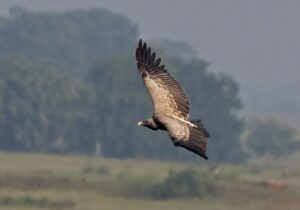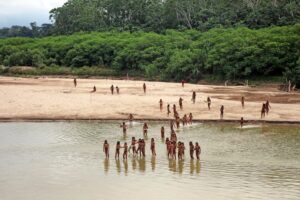Mount Erebus can power Antarctic science: One of the difficulties of carrying out research in Antarctica is the lack of a power supply for equipment. Solar panels are useful in summer but not in winter. Now researchers from the U.S. and the UK have come up with an ingenious solution. They want to use the heat from the lava lake in Mount Erebus to generate electricity. Mount Erebus is the most active volcano in Antarctica. The temperature difference between the ground surrounding the lake (approximately 80˚C) and the air is enough to run a thermoelectric generator that turns heat into electricity.
New index ranks rainforest vulnerability: A new tropical rainforest vulnerability index detects and evaluates the impact of climate change and human land use on different rainforests. The index has shown that the world’s three major rainforests have different degrees of susceptibility to threat. The Amazon Basin is extremely vulnerable to both. The Congo Basin is more resilient to climate change, although it undergoes the same warming and drying. Finally, most Asian rainforests suffer from human land use. “Rainforests are perhaps the most endangered habitat on Earth –- the canary in the climate-change coal mine,” said Sassan Saatchi, lead author of the new index.

Japan creates the first litter of genetically modified marsupials. Photo: NIKEN Institute
Japan’s genetically modified marsupial: Scientists in Japan have bred the first-ever genetically modified marsupials. They bred a litter of albino opossums using the gene-editing technique CRISPR. Though this gene editor has modified many things, including human embryos, scientists have been trying to apply it to marsupials for 25 years. Their unique biology made them a challenging holdout. “It’s an accomplishment that I didn’t think would happen in my lifetime,” said geneticist John VendeBerg.
Russian island abuzz with rare bee
Unique bumblebee discovered on Wrangel Island: Glacier bumblebees (Bombus glacialis) were first identified in 1902 on the Russian Arctic island of Novaya Zemlya. Biologists first thought that the species was endemic to this remote island and may have even survived the last Ice Age there. Now the species has also turned up on Wrangel Island, 3,600km away. The two populations likely separated during the warm interglacial period 270,000 years ago. The species is quite unique and genetically distinct from mainland species.
Astronomers detect light behind black hole: Light has been detected behind a black hole for the first time. The supermassive black hole in a galaxy 800 million light-years away emitted bright flares from X-rays. Telescopes also picked up “luminous echoes” of smaller, delayed flashes in different colors. The discovery further confirms Albert Einstein’s theory on general relativity.

Photo: University of Queensland
First cows, now pigs worsen climate change
Feral pigs release 1.1 million cars-worth of carbon dioxide: Feral pigs damage almost every ecosystem they end up in. Their environmental destruction costs the U.S. $1.5 billion every year. In addition to this, they release 5.4 trillion tons of carbon dioxide into the atmosphere every year –- the equivalent of emissions from 1.1 million cars. “When we think of climate change, we tend to think of the classic fossil fuel problem. This is one of the additional threats to carbon, and to climate change potentially,” said ecologist Christopher O’Bryan.
Unraveling air pollution in Asia: In recent years, a growing body of research has highlighted the link between health and air pollution. In 2020, IQAir released a report naming the 50 most polluted cities in the world. Forty-two of them are in Asia. Scientists believed that the mountains near these regions blocked airflow and turned the cities into partially closed chambers where pollution accumulates. New research proves otherwise: These cities generate their own pollution.






